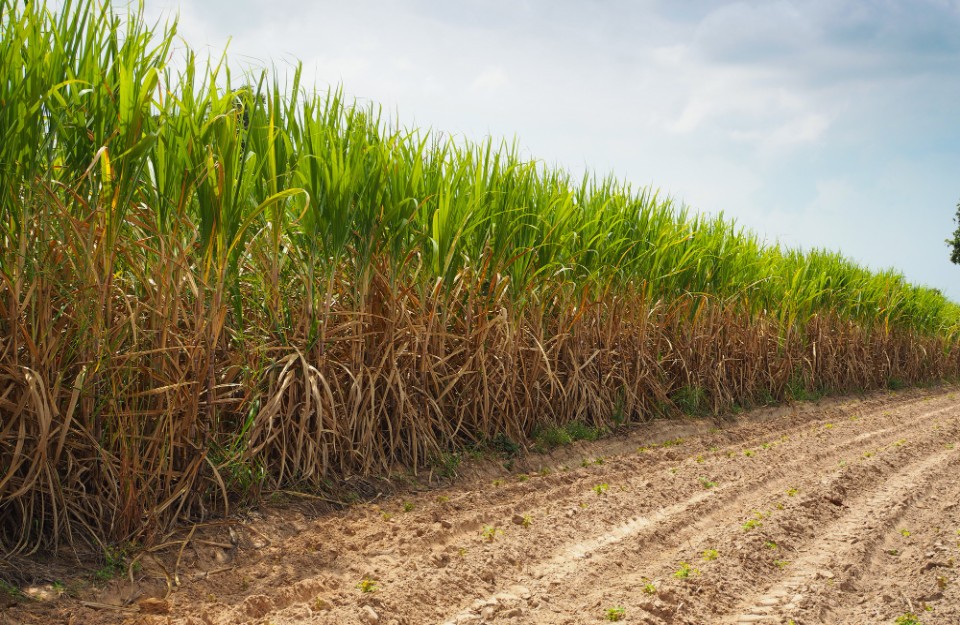
Sugarcane, the most extensively cultivated crop in India, provides employment to millions of people directly or indirectly. Sugarcane cultivation is widespread across India, with major sugarcane-producing districts in Madhya Pradesh including Narsinghpur, Chhindwara, Betul, Datia, and Burhanpur. Presently, about 50% of the total sugarcane production is in Narsinghpur district.
Sugarcane is primarily grown in the country, with cultivation taking place on 30-35 million hectares of land annually. The yield of sugarcane in the country is 65.4 tons per hectare, which is comparatively low. Sugarcane is used for sugar and jaggery production. There is a high demand for sugarcane juice in markets, enabling small-scale vendors to make substantial profits by selling sugarcane juice during summers.
Sugarcane cultivation should be done using the line method. The distance between the lines varies based on the field, weather, and timing. Planting is done at a distance of 90 centimeters during the spring and autumn seasons, and 60 centimeters apart when planting is delayed. The distance between rows is kept at 20-25 centimeters in two-eyed sugarcane plants.
Land, Weather, and Field Preparation for Sugarcane Cultivation: Black, loamy soil and loamy soil with good drainage are ideal for sugarcane cultivation. The pH value of the soil should be between 6.5 to 7.5. The land should be deeply plowed from April to May. Subsequently, the field should be plowed 2 to 3 times using a desi plow or cultivator, leveled, and cleared of weeds. Sugarcane thrives in loamy soil. If there is a lack of moisture in the soil, plowing can be done before planting. Sufficient time should be allowed for manure to settle in the field.
When considering inter-cropping with sugarcane, it's wise to choose crops that won't negatively impact the sugarcane yield due to shading. Through careful crop selection and employing advanced agricultural techniques, inter-cropping can provide greater benefits compared to monoculture. During the autumn season, crops such as peas, potatoes, onions, garlic, mustard, wheat, lentils, etc., can be inter-cropped with sugarcane. Similarly, during the spring season, crops like beans, lentils, mung beans, and okra can be sown alongside sugarcane. Research indicates that inter-cropping sugarcane with crops such as potatoes, peas, wheat, and mustard can result in higher profits compared to single-crop sugarcane farming.
CoJN 9823: This variety matures rapidly and exhibits resistance to stem borer infestations. It typically yields between 100-110 tons per hectare and is ready for harvesting within 10-12 months.
Sugarcane Irrigation: various regions of Uttar Pradesh, sugarcane crops typically require 1500 to 1750 millimeters of water, with approximately 50% obtained from rainfall. In case of water scarcity, light irrigation should be applied a month after planting to ensure proper germination. During the summer season, irrigation should be performed at intervals of 20-25 days. If there's no rainfall for 20 days, irrigation becomes necessary. Mulching with dry leaves aids in retaining moisture, thereby promoting better crop growth.
Rationale Behind Sugarcane Cultivation: Sugarcane stands out as a prominent perennial crop capable of generating profits exceeding 150,000 rupees per hectare annually. In comparison to crop rotations such as maize-wheat or rice-wheat, sugarcane cultivation offers greater returns. It presents a low-risk option with decreased vulnerability to diseases and pests. Through inter-cropping with sugarcane, investors can witness returns within 3-4 months. Optimal germination reduces seed requirements while maximizing cane growth. Early maturation facilitates timely crushing in factories.
Suitable Climate and Seed Quantity for Sugarcane Cultivation: Sugarcane thrives in temperatures ranging from 30-35 degrees Celsius. Planting should be conducted during dry weather conditions. It is imperative to select healthy seeds devoid of pests and diseases and carefully choose the appropriate field. Delayed planting necessitates one and a half times more seed, typically around 56,000 two-eyed buds per hectare. For seed treatment, it is recommended to apply 112 grams of Bavistin per hectare, dissolved in 112 liters of water.
Fertilizers and Manure for Sugarcane Crop: To achieve optimal yield, cow dung manure should be utilized. Apply 150 kilograms of nitrogen, 40 kilograms of potassium, and 80 kilograms of phosphorus per hectare. Nitrogen should be applied in three equal parts, while potassium and phosphorus should be applied in their entirety. Zinc sulfate should be administered at a rate of 25 kilograms per hectare. Nitrogen application should be carried out twice in April-May.
Diseases and Control Measures in Sugarcane Cultivation: During the cultivation of sugarcane, various diseases such as smut, wilt, red rot, rust, leaf scorch, and blight may occur.
Control Measures:
Harvesting Sugarcane: Sugarcane should be harvested when fully ripe or showing slight yellowing, preferably by April. After harvesting, sugarcane should be promptly transported to the sugar factory. Only harvest as much sugarcane as can be processed at the sugar factory to avoid losses due to deterioration.